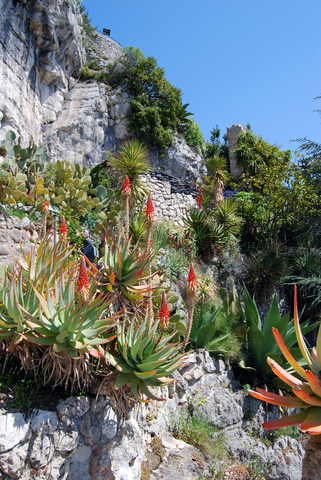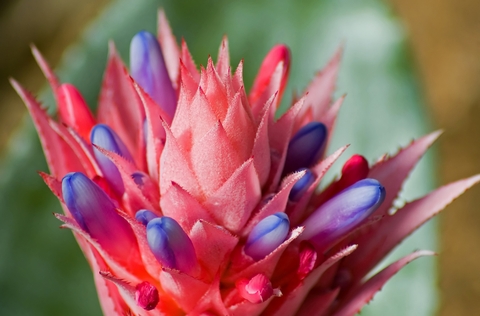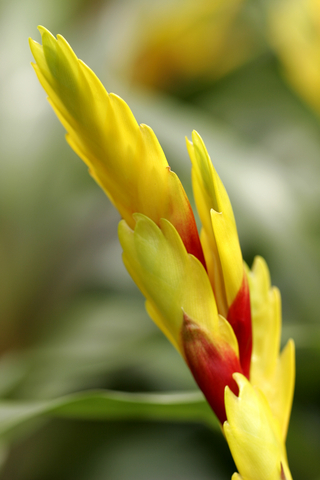All they need is the air they breathe, bright lightbut no direct sunand a bath two to three times a week. Do not add soil; theyll just hang out wherever you plop them down and in whatever container you plop them in. Their roots were made for clingingnot for covering with soil. They are known as epiphytes: plants that get their nutrients from the air through their leaves instead of through their roots. Their genus is Tillandsia, and they are part of the Bromeliad family. Most of the 550 species are natives of Mexico and South and Central America. A few species are also native to Florida. They make interesting, exotic-looking, colorful plants. Give your imagination wide range in deciding where and how to show them off.

Caring for Air Plants
In their natural surroundings, air plants live on trees, rocks or other soilless surfaces. Since they take in all of their water and nutrients through their leaves, the roots are used to anchor the plantnot for absorbing food. They thrive in South and Central America, where the temperatures are warm and rain and fog provide water to be taken in through their leaves. So, for success in growing these interesting plants, duplicate their native habitat.
- They will thrive on bright light, but dont place them in direct sunlight. Also, dont place them in deep shade with no, or little, reflected sunlight.
- They usually cannot survive freezing temperatures, but they are very adaptive to temperatures ranging from 35 degrees and up into the 100 degree range.
- Place them outside in a suitable location in your garden. They also do well as houseplants as long as they can get good light. Dont place them directly in front of a south or west-facing window; they will probably suffer from the intense sunlight.
- Air plants are somewhat drought tolerant, but in their native areas their leaves receive adequate moisture through rain and fog. So, in an area foreign to them, provide them with frequent water baths to keep them happy. Water them two to three times per week. They need to be watered both on top and underneath their leaves, so misting is not enough. The best bet is to totally submerge them in a bucket of water or at the kitchen sink. Hold them under the water for a minute or so.
- Once a week, they will benefit from a long soakingunderwaterfor two to three hours. Emerge the entire plantexcept the flower (if it is flowering). The bathtub works well for this spa treatment if you have several air plants.
- Fertilize only once a month (as part of your watering schedule) with an orchid food or water soluble fertilizer at 1/4th the strength recommended on the label. Air plants get almost all of their nutrients from the air, so fertilizing is not really necessary in most cases. Over fertilizing can kill them.

Displaying Your Air Plants
Get creative and have fun when planting your air plants. Really, you wont be planting them at all. To put them in soil is to kill them. Rather, you will be mounting them. Here are some ideas:
- If you want them to look like a normal potted plant, put them in a decorative pot, but add some gravel or pebbles beforehand to keep it from toppling over.
- Use driftwood you have found on your excursions to the beach. This makes an excellent art object and can be hung on a wall or other prominent location.
- Now, you have a use for those large sea shells youve collected over the years. Place air plants in the shells and display them where they are sure to be a conversation piece.
- Put them in teacups, attractive vases or dishes, hang them from fishing line around your mirrorthe possibilities are almost endless.
- To attach air plants to the objects on which they will be displayed, use wire (but not copper wireit can kill air plants), fishing line, twist ties, etc. You can also use a water-proof glue (so it wont dissolve when you give your plants their water baths), but dont use SuperGlue.

Air Plant Bonuses
Not only will you be rewarded with a beautiful flower on each plant yearly, the plant will provide you with babiestheyre called pups. You can leave these pups on the mother plant to make it appear larger, or, when they grow to about one-third the size of the mother plant, you can remove them and let them grow as individual plants. Most air plants will produce from two to eight pups each year, and these pups will in turn produce their own pupsyoull soon have dozens of air plants to enjoy or give away!


